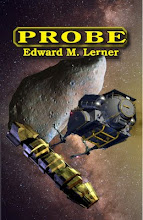To begin, a new lunar exploration company. As Ars Technica reports, "Golden Spike wants to start human lunar expeditions within a decade." Though Golden Spike hasn't revealed much in the way of plans, it has a serious list of backers, including Northrop Grumman and the United Launch Alliance. (ULA is a joint venture of Boeing and Lockheed-Martin.) Golden Spike's board of directors includes NASA veterans and notable VCs.
Maybe there's a reason for NASA to ask future Moon visitors to respect its stuff.
Looking farther afield, Wired (as one among many news outlets) reports that "New Asteroid Mining Company Aims to Manufacture Products in Space." Where previously announced asteroid mining company Planetary Resources inc. has no public plans beyond launching telescopes, Deep Space Industries says it will launch asteroid exploration probes in 2015 and sample return probes a year later.
From Space.com, "NASA Eyes Wild Plan to Drag Asteroid Near the Moon." (For "near" read : "into orbit of.") "The plan could help jump-start manned exploration of deep space, carving out a path to the Red Planet and perhaps even more far-flung destinations, its developers maintain."
I applaud the study -- and fail to see why it's wild. Especially with a target date as lacking in ambition as 2025.
 |
| (cover of 2011 reissue) |
I'm happy to see life starting to catch up.
What makes DSI's plans exceptionally cool is what they foresee doing with the space-based resources: "mining resources and turning them into products using space-based 3-D printers."
Beyond Near Earth Objects such as those PRI and DSI have hopes of exploiting, let's see what's up with Mars. Or, rather, inside Mars. This time from Fox News, "NASA to launch new mission into core of Mars." After years of interesting discoveries by robots circling and creeping about the surface of Mars, the punnily named Insight mission, with a planned 2016 launch, will give us visibility inside the Red Planet. Cool stuff.
Though I can't help but wonder if we wouldn't have learned more from an alternative mission beaten out by the Insight team: a return to Titan. I'm not opposed per se to the Mars mission, but I have to agree with the observation "... NASA hasn't approved missions to the other outer planets or a comet since a Pluto mission was picked in 2001."
Has NASA become too timid? Apollo astronaut, geologist, and former senator Harrison Schmidt thinks so. See (from Space.com), "US Needs New Deep-Space Agency, Apollo Astronaut Says."
| Pioneer 10 |
Might gravity work slightly differently over great distances than we have long believed? Are dark matter or dark energy at work?
Maybe -- probably -- not. From IEEE Spectrum, an absolutely fascinating bit of scientific detective work: "Finding the Source of the Pioneer Anomaly." The article is well worth the read, but here's the punch line: "The puzzling deceleration was produced by the asymmetric radiation of waste heat created onboard the spacecraft."
And with that, I'll declare I've taken up enough space for one post.





























No comments:
Post a Comment